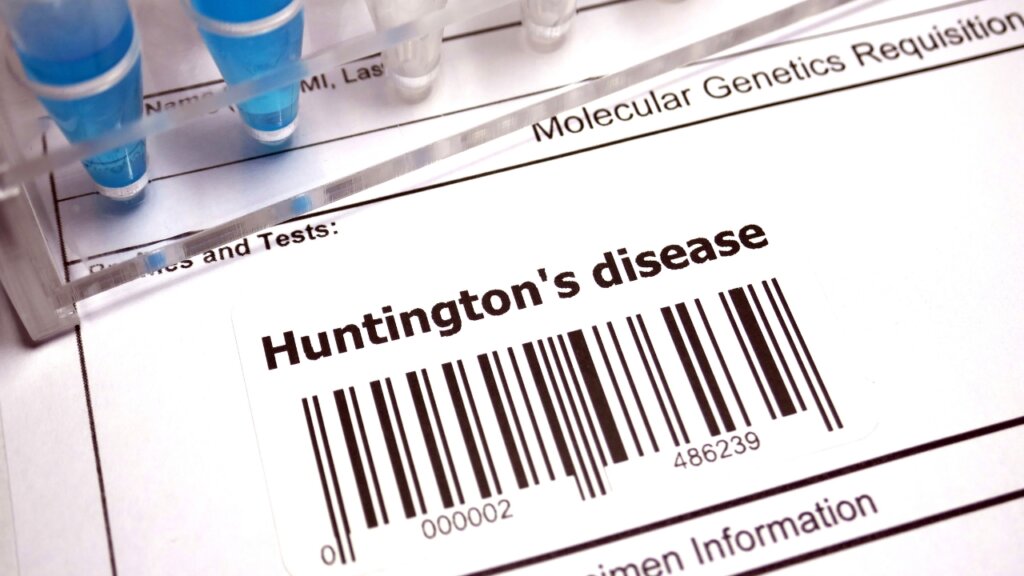
What Is Huntington’s Disease & The Research Behind It
Huntington’s disease (HD) represents one of the most formidable challenges in contemporary neurological medicine. Defined as a progressive, inherited neurodegenerative disorder, HD systemically destroys nerve cells in the brain, primarily affecting control centers for movement, cognition, and emotion. The disease manifests through a devastating triad of symptoms: uncontrolled movements, progressive cognitive decline, Huntington’s, and severe psychiatric symptoms.
The trajectory of HD is relentless and currently irreversible. Symptoms typically emerge in adulthood, although onset can sometimes occur in childhood, marking the start of a difficult decline. From the initial subtle changes, the disorder advances to severe movement dysfunction, profound cognitive impairment, and critical difficulties with speech and swallowing. Because this condition is currently incurable, the research focus is intensely centered on identifying disease-modifying therapies that can halt or slow the process of Brain cell degeneration.
Discovering the Cause of Huntington’s Disease
What Causes Huntington’s Disease? The HTT Gene Mutation
The root cause of HD lies within a single, critical error in the genome, making it a definitive Hereditary neurological disorder. HD is caused by a specific Huntington’s gene mutation found in the Huntingtin (HTT) gene located on chromosome 4.
This mutation involves a trinucleotide repeat expansion-specifically, an abnormal repetition of the CAG codon sequence. This excessive repetition leads to the production of an elongated, abnormal form of the huntingtin protein, often referred to as polyQ-Htt. This mutant protein is intrinsically toxic; it folds improperly, aggregates, and accumulates within brain cells.
This accumulation disrupts normal cellular machinery, leading to neuronal dysfunction and the subsequent, profound Brain cell degeneration characteristic of Huntington’s disorder. The extent of the CAG repeat length is correlated with the age of onset and the severity of the disease.
Is Huntington’s Disease Hereditary?
Understanding the inheritance pattern of HD is critical, as it defines the disease’s profound impact on family history. HD is classified as an autosomal dominant disorder.1 This means that an individual requires only one copy of the mutated HTT gene, inherited from either parent, to develop the condition.
A parent who carries the mutated gene has a 50% risk of passing it on to each of their children. This high, definite risk places an extraordinary burden on families, making the disease not just a personal health crisis but a fundamental family challenge. This genetic certainty is a crucial distinction between HD and other, more complex neurological conditions where genetic components are only partial risk factors.
Genetic Testing for Huntington’s Disease Explained
The definitive diagnosis of HD hinges on a combination of medical history (including the crucial family history), physical examination, and specific Genetic testing for Huntington’s. The genetic test is highly reliable, directly counting the number of CAG repeats in the HTT gene to confirm or deny the presence of the mutation.
Predictive Testing and Counseling
The ability to definitively test for the gene mutation, often long before symptoms appear, raises significant ethical and psychological considerations. Predictive testing is available for asymptomatic individuals who have a 50% risk of inheritance. This choice is deeply personal and complex.
For families navigating this genetic reality, genetic counseling is paramount. What families should know about Huntington’s disease genetics extends far beyond the 50% risk factor; it encompasses understanding the implications of a positive or negative result on mental health, life planning, career decisions, and family relationships.
Given that mood changes, such as depression and anxiety, are often among the Early signs of Huntington’s, the emotional and psychiatric support surrounding the testing process is essential to ensure that individuals are prepared for either outcome. This comprehensive support framework acknowledges the intense psychological pressure inherent in a disease defined by genetic certainty.
Genetic and Clinical Milestones in Huntington’s Disease
| Term | Definition/Impact |
| HTT Gene Mutation | The specific genetic error on Chromosome 4, quantified by a critical CAG repeat expansion. |
| Autosomal Dominant | The inheritance pattern ensures a 50% risk of being affected for every child of an affected parent. |
| Genetic Testing | The definitive diagnostic tool, capable of confirming or predicting the disorder. |
| Polyglutamine (PolyQ) Tract | The abnormal, extended section of the huntingtin protein that causes toxicity. |
The Spectrum of Symptoms: Clinical Manifestations and Progression
HD manifests as a comprehensive deterioration across three distinct yet interconnected domains: motor control, cognitive function, and psychiatric health.
The presentation and progression vary significantly among individuals, most notably between adult and juvenile forms of the disease.
What Are the Early Signs and Symptoms of Adult-Onset Huntington’s Disease?
Symptoms typically appear in adulthood, often between the ages of 30 and 50, though they can vary widely. The Early signs of Huntington’s can usually be subtle, making initial diagnosis challenging.
The Triad of Early Clues for Huntington’s Disease
1.Motor Clues: Early motor symptoms may include minor signs of clumsiness and subtle balance problems. These may initially be dismissed as simple awkwardness or a sign of aging, but they herald the onset of movement dysfunction.
2.Psychiatric/Behavioral Shifts: Often preceding the motor symptoms are Behavioral changes in Huntington’s. These include increased irritability, pronounced depression, or anxiety. The manifestation of HD as primarily psychiatric symptoms in the early stages can lead to delayed or misdiagnosis, particularly if a strong family history is not initially elicited or is unavailable. Recognizing these initial mood shifts as a possible neurological symptom is crucial for timely expert intervention.
3.Cognitive Changes: Early Cognitive decline Huntington’s can involve subtle memory loss or difficulty concentrating, impacting work performance and daily tasks.
Motor Impairments & The Phenomenology of Chorea
As the disease progresses, the defining motor symptom of the adult-onset disorder emerges: chorea. Chorea symptoms are defined as uncontrolled, involuntary, random, and jerky movements that flow from one part of the body to another.
Initially, chorea may present as restlessness or fidgeting. However, over time, the movements become more severe and disabling, interfering significantly with walking, speaking, and eating.1 While chorea is the most visible sign of HD, the progressive loss of fine motor control and the development of balance issues are equally debilitating, compounding the risk of falls and injury. The relentless nature of these motor symptoms is a direct result of the toxic polyQ-Htt protein destroying neurons, particularly in the striatum of the brain.
What Is Juvenile Huntington’s Disease (JHD)?
A small but significant percentage of cases involves onset before the age of 20, known as Juvenile Huntington’s disease. JHD typically involves a faster rate of progression and a distinct set of initial symptoms, which is vital for understanding the Differences between juvenile and adult Huntington’s disease.
In JHD, the primary presenting motor symptom is often rigidity or bradykinesia (slowness of movement) rather than the prominent chorea seen in adults. Furthermore, JHD is frequently accompanied by a more rapid rate of cognitive decline and sometimes the onset of seizures.
The distinction in clinical presentation—JHD often being stiffness/rigidity dominant versus adult-onset being chorea dominant-necessitates specialized pediatric neurological care and educational planning. The rapid progression of Juvenile Huntington’s disease presents an even more immediate need for specialized care and therapeutic intervention.
Managing Late-Stage Progression
The final phase of the disease is referred to as Late-stage Huntington’s.1 In this stage, symptoms are severe and highly disabling. Patients experience profound motor deterioration, often making them entirely dependent on caregivers.
The critical issues in Late-stage Huntington’s include:
- Severe Movement Disorders: While chorea may decrease, it is replaced by rigidity, and mobility is often lost entirely.
- Advanced Cognitive Decline: Profound dementia and loss of functional executive capacity.
- Dysphagia: Significant difficulty speaking and swallowing, which poses a severe risk of malnutrition and aspiration pneumonia.
Treatment, Care, and Prognosis For Huntington’s Disease
Is There a Cure for Huntington’s Disease?
It is essential to state the current reality for patients and families: There is currently no cure for HD.
All available clinical interventions are categorized as either supportive or symptomatic treatments, focusing on managing complex symptoms and maximizing quality of life during the disease’s progression.
The ultimate goal of HD research—to identify a disease-modifying agent that can halt the underlying Brain cell degeneration—remains the focus of scientific endeavors globally.
Comprehensive Huntington’s Disease Treatment Options
Effective Huntington’s disease treatment requires a multidisciplinary, holistic approach, addressing the motor, cognitive, and psychiatric challenges simultaneously. These Treatment options for Huntington’s disease symptoms are collectively known as Huntington’s disease care.
Pharmacological Management
Medications play a crucial role in controlling the most disruptive symptoms. Specific drugs can be used to control the involuntary movements (chorea). Additionally, mood-stabilizing medications, antidepressants, and anti-anxiety agents are vital for managing the complex psychiatric symptoms that are inherent to the disease pathology, such as depression, anxiety, and sometimes hallucinations or delusions.1
The Multidisciplinary Care Team
Since HD impacts nearly every aspect of life, high-quality Huntington’s disease care relies heavily on specialized therapeutic support:
- Physical Therapy (PT): Focuses on maintaining mobility, improving balance, and strengthening coordination. PT strategies adapt as the disease progresses, moving from maintaining full function to mitigating fall risks.
- Occupational Therapy (OT): Helps patients maintain independence in daily activities (ADLs) through adaptive equipment and techniques for feeding, dressing, and hygiene.
- Speech Therapy: Crucial for both communication and swallowing. Specialized swallowing therapy is implemented to manage dysphagia, reducing the risk of aspiration and ensuring adequate nutrition.
- Cognitive Rehabilitation: Offers strategies to manage memory loss and difficulty concentrating. This includes techniques to structure the environment and simplify tasks, helping patients adapt to their progressive Cognitive decline Huntington’s.
- Counseling and Support: Essential for managing the significant emotional toll the disease takes on both the patient and the family.
Current HD Symptom Management Strategies
| Symptom Domain | Therapeutic Approach | Goal |
| Motor Function (Chorea) | Medications (VMAT2 inhibitors), Physical Therapy | Control uncontrolled movements, improve balance and coordination. |
| Psychiatric/Mood | Antidepressants, Counseling, Cognitive Behavioral Therapy (CBT) | Manage depression, anxiety, and behavioral changes. |
| Daily Activities & Swallowing | Occupational Therapy, Speech/Swallowing Therapy | Improve independence, maintain nutritional intake, and aid communication. |
| Cognitive Function | Cognitive Rehabilitation, Mental Stimulation | Slow Cognitive decline Huntington’s and enhance adaptive thinking skills. |
Prognosis and Life Expectancy Considerations
HD is a progressive disease with a variable life expectancy. The average life expectancy for Huntington’s disease after the initial onset of symptoms is generally around 15 to 20 years.
Prognosis is influenced by several factors, most notably the age of onset and, in some cases, the length of the CAG repeat expansion. Juvenile HD tends to progress at a faster rate than the adult-onset form of HD.
Given the incurable nature of the disease, ensuring access to quality, holistic Huntington’s disease care is the only mechanism currently available to maximize functional independence and positively influence the trajectory of a patient’s quality of life and dignity during the 15-to-20-year progression period.
Essential Support and Care Tips for Patients and Families
The provision of support extends beyond clinical medicine. Support for Huntington’s patients must be comprehensive, addressing the needs of both the individual and their caregivers.
Practical Support and care tips for Huntington’s disease patients include:
- Establishing Routines: Predictable daily schedules can help manage cognitive and behavioral changes.
- Environmental Safety: Modifying the home environment to mitigate the risk of falls due to chorea and balance issues.
- Nutritional Support: Focusing on calorie-dense, easy-to-swallow foods to combat weight loss caused by constant movement and dysphagia.
- Legal and Financial Planning: Addressing long-term care needs early to reduce stress later in the disease course.
The Future of HD Research
The search for a cure relies entirely on groundbreaking Huntington’s research that challenges existing assumptions and targets the disease at the molecular level. This is where the Brain Research Foundation’s commitment to funding pioneering science is essential.
Why BRF Research Funding is Vital
While large-scale efforts may focus on clinical trials of known drug candidates, foundational knowledge is required to identify novel targets for a genuine breakthrough in Huntington’s disease.
The BRF fills the critical role of providing “seed money”-funding initial, high-risk studies that can generate the preliminary data necessary to attract larger, long-term investments from government or industry.
These proposals undergo rigorous review by the Scientific Review Committee (SRC), ensuring that only the most promising and transformative neuroscience projects receive support.
Targeting the Molecular Core: PolyQ-Htt and Neuronal Transport
Current BRF-supported Huntington’s research focuses on the precise and intricate ways the abnormal polyQ-Htt protein damages neurons, specifically targeting essential cellular infrastructure.
Deep Dive into Fast Axonal Transport (FAT)
One area of specific, foundational research being supported by the BRF concerns the role of polyQ-Htt in disrupting Fast Axonal Transport (FAT).
FAT is the crucial cellular “highway” within a neuron, responsible for moving essential components-such as mitochondria, nutrients, and signaling molecules-between the cell body (soma) and the distant axon terminals. This bidirectional transport system is non-negotiable for neuronal survival and communication.
Recent studies indicate that the toxic polyQ-Htt protein inhibits this transport system, specifically disrupting both anterograde (moving away from the cell body) and retrograde (moving back towards the cell body) FAT.
When FAT is inhibited, the nerve cell is effectively starved, leading directly to the widespread Brain cell degeneration observed in HD, particularly in the striatum. This establishes a causal relationship between the genetic mutation, the cellular transportation disruption (FAT inhibition), and the final outcome of neurodegenerative disease.
Investigating the CDyn Mechanism
A core hypothesis of BRF-funded research is centered on illuminating the precise molecular mechanisms underpinning this disruption. Specifically, investigations are exploring how polyQ-Htt alters the functionality and phosphorylation of a key protein called CDyn.
CDyn is known to be critical for retrograde FAT. Understanding how polyQ-Htt inhibits this specific component will illuminate the steps in cellular toxicity, providing a particular molecular target for future disease-modifying therapies.
This scientific approach moves beyond merely managing the symptoms of HD. By targeting the fundamental processes responsible for cellular survival (such as FAT and the proteins governing it, like CDyn), this research seeks to intervene at the source of Brain cell degeneration, providing a pathway far more transformative than current Huntington’s disease treatment strategies.
Gene Therapy and Disease-Modifying Agents
The ongoing foundational research supports a growing focus on potential disease-modifying therapies:
- Gene Silencing Strategies: These cutting-edge approaches aim to prevent the production of the toxic polyQ-Htt protein altogether, offering the most direct approach to stopping the disease process.
- Restoring Cellular Function: Research targeting FAT, like the BRF-supported studies, opens the door to therapies designed to restore essential transport functions within neurons. If the cellular highway can be fixed, neurons may be able to survive even with the presence of mutant protein.
Continued investment in Huntington’s research is the only pathway to transitioning from symptomatic management to true disease modification, ultimately discovering if a cure for Huntington’s disease is indeed possible.
Partnering with the Brain Research Foundation
Huntington’s disease is a devastating, progressive genetic disorder rooted in the Huntington’s gene mutation on chromosome 4. It presents a complex clinical challenge marked by uncontrollable movements, Cognitive decline, Huntington’s, and psychiatric distress, leading to an average Huntington’s disease life expectancy of 15 to 20 years post-onset.
While patients currently rely on comprehensive Huntington’s disease care and management of Chorea symptoms and Behavioral changes, the ultimate hope lies in scientific discovery.
The Brain Research Foundation’s commitment to providing critical seed funding accelerates pioneering neuroscience research, pushing the boundaries of what is known about Brain cell degeneration.
By supporting fundamental molecular investigations-such as the study of polyQ-Htt’s disruption of Fast Axonal Transport and its influence on proteins like CDyn-the BRF directly contributes to identifying the precise targets necessary for a genuine breakthrough in Huntington’s disease.
Partnership with the Brain Research Foundation ensures that the boldest, most innovative ideas move forward rapidly, translating foundational science into the treatments and potential cures the HD community urgently needs.

Reviewed by Terre A. Constantine, Ph.D. (November 2025): Terre A. Constantine, Ph.D., is the Executive Director and CEO of the Brain Research Foundation. Terre is dedicated to BRF’s mission because of her background as a trained scientist. She understands the importance of research and the difficulty of obtaining funding for innovative ideas. She earned her Ph.D. from the University of Pittsburgh Medical School in the Department of Pharmacology with a focus on drug addiction and stroke. She continued her research at The Scripps Research Institute, where she studied neuroregeneration.
LinkedIn Bloomberg The Daily Pennsylvania


